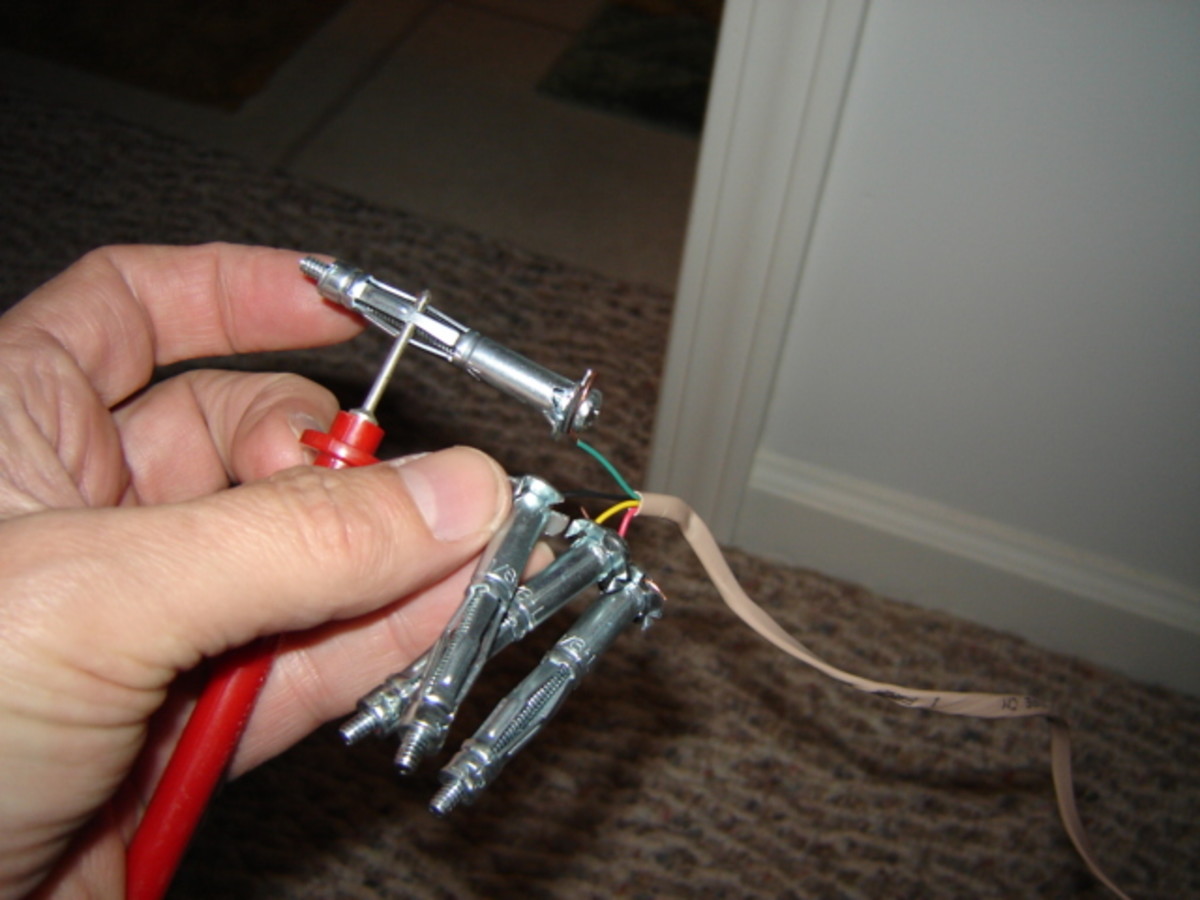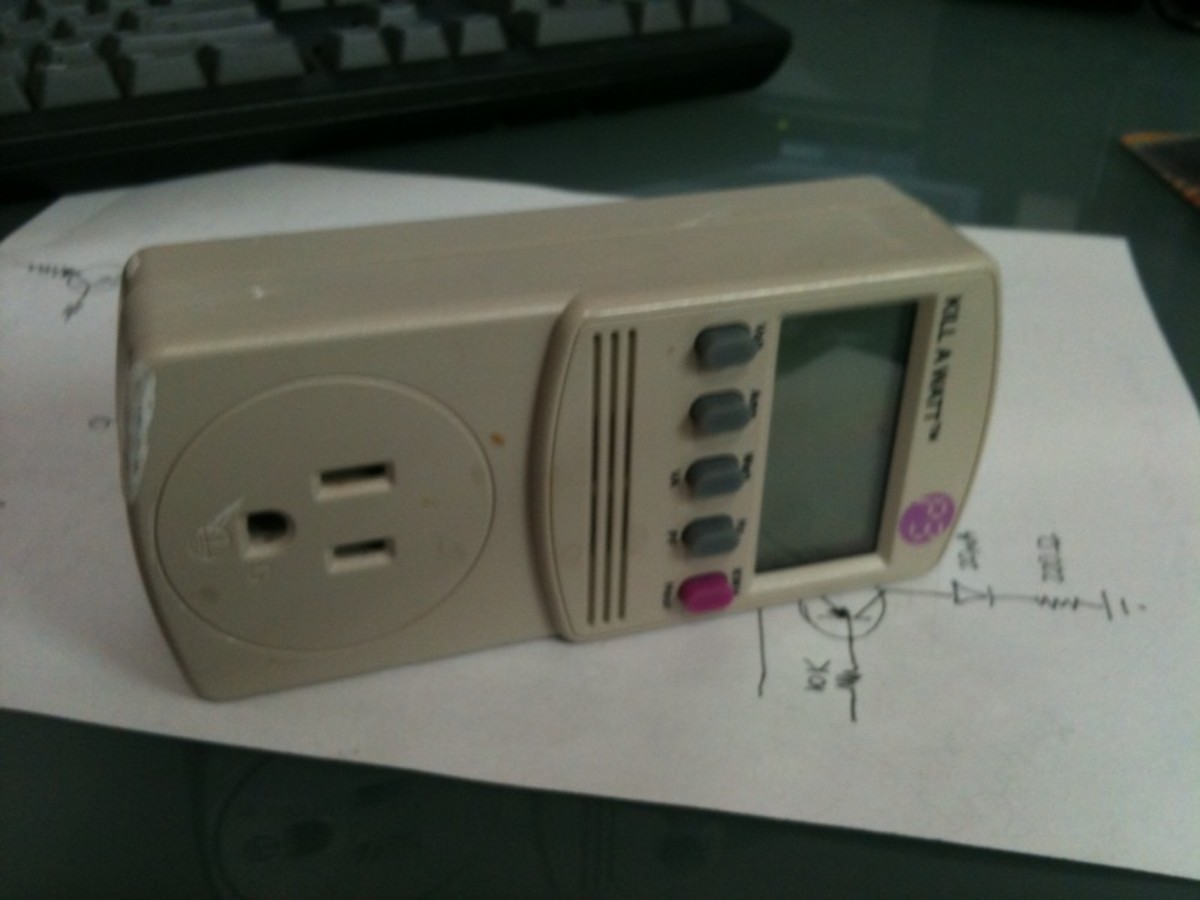Electric Shock Injuries
This second part explains on electric shock injuries and other type of injuries that result from electrical shocks.
Part 1 describes the dangers of electricity, the shock hazards and how a person comes to get an electric shock. Part 3 will discuss on the shock protection.
xxxxxxxxxxxxxxxxxxxxxxxxxxxx
NOTE: See also the following related electrical hubs that I published many months ago: House Electric Panel Pictures; Electric Shock Protection; How do you get electrical shocks?
xxxxxxxxxxxxxxxxxxxxxxxxxxxx
C. What happen when you get the electric jolt or the shock
Let us go directly to what actually happens to a human body when electric current flow through by accident (or by intention…).
Effects of the shocks
1 mA
A normal person will feel a slight tingling sensation.
(Note: 1 mA is equal to 1/1000 Ampere, or one-thousandth of an Ampere)
5 mA
A mild shock will be felt, but most persons will be able to “let go”. Not a painful feeling, but definitely disturbing. However, a strong reflexive movement by the victim can cause further accidents and other type of injuries.
6 to 30 mA
The victim can be paralyzed, or the muscles will freeze (will not be able to release a tool, wire, or other object. Painful, and my not be possible to let go.
At high voltage (above 600 Volt, this current can already cause severe burns).
Women start to suffer the effect at lover current levels (6-26mA), while men can sustain until a bit higher (10 to 30 mA)
30 mA
Will cause respiratory paralysis
(The victim stops breathing for a period of time)
30 mA
This is the most sensitive rating of Earth Leakage Circuit Breakers (ELCB) normally installed in residential home in this country.
50 to 150 mA
The victim get an extremely painful shock.
The breathing stops (respiratory arrest).
Severe muscle contraction: flexor muscles may cause holding on, extensor muscles may cause intense pushing away.
Death is possible.
(At 75 mili-Ampere and above – The victim undergo ventricular fibrillation (very rapid, ineffective heartbeat). This condition can cause death within a few minutes. The only way to save the victim is by a special device called defibrillator.)
1 A and above
Uneven heartbeats occurs (Ventricular fibrillation).The muscles will contract.
Damage to the nerves.
Death is likely.
4 A
The victim gets heart paralysis, which means the heart stops pumping.
(Highlight: How much is 4 amperes? If you connect a 1KW portable space heater to a wall socket outlet, and your house supply from the electricity company is 240 Volt, then that’s about 4.1 amperes running inside the wires from the socket to the space heater).
5 A and above
Human tissues get burned.
10 A and above
Cardiac arrest and severe burns.
Death is probable.
Note: The above medical data has been obtained from the National Institute for Occupational Safety and Health (NIOSH)
13 A
The lowest current a typical plug fuse will blow in a socket – plug supply connection.
15 A
Lowest level of current a normal circuit breaker or fuse will trip at a home distribution board, or a house electrical panel.
The higher the current, the longer the time of the shock current, the more severe the injuries
(a) As you can see above, the higher the current that flow through a human body, and the longer it flows, the more serious the injuries.
(b) If the shock is short in duration, it may only be painful. A longer shock (lasting a few seconds) could be fatal if the level of current is high enough to cause the heart to go into ventricular fibrillation.
100 mili-ampere current flow (that is one tenth of an ampere, or 0.1 Ampere) through the body will kill a person in just 2 seconds. Maybe he does not die immediately, but death is almost certain after sustaining 100 mA for 2 seconds.
(b) A person can only withstand less that 10 mili-amperes and still have control of his arm muscles. Beyond that, he no longer has control over his arms. That is the reason he cannot let go of the faulty tool he is holding (the hand may even tighten the grip on the electric tool), resulting in longer flow of shock current through the body thereby making the injuries more serious.
This situation when prolonged will lead to respiratory paralysis (the muscles that control breathing cannot move).
That is part of the reason for the requirements to have install Earth Leakage Circuit Breakers (ELCB) for circuit supplying electrical tools. The ELCB can detect very small amount of leaked electrical current and trip that circuit within a fraction of a second thereby saving lives.
(c) A severe shock can cause much more damage to the body than is visible. A person may suffer internal bleeding and destruction of tissues, nerves, and muscles. Sometimes the hidden injuries caused by electrical shock result in a delayed death.
(d) If a shock current is maintained long enough at a relatively high current, death is probably not avoidable. But if somehow the contact area to the electrified object is broken fast enough and the victim’s heart has not yet been damaged, his normal heartbeat may return, even though this type of recovery is rare.
The severity of injuries depends on which part of the body does the shock current flow through
a) The most serious effect is when the current flow through the heart.
b) If a live wire accidentally touches the body by contact at the head, the nervous system will be severely damaged.
c) If during the accident the victim’s right hand touches the LIVE wire, while the left hand is holding the metal casing of the washing machine, the electrical current will flow through the chest. Then the lungs and heart will probably be injured.
Of course how severe will also depend of how many mili-amperes and how long the shock current flows.
d) If the current only flow through the arm portion, then the injuries can be as bad as the arm coming off while the victim still survive (not dead). There have been actual cases like these in high voltage accidents.
e) If the current does go through the chest, the person will almost surely be electrocuted. A large number of serious electrical injuries involve current passing from the hands to the feet. Such a path involves both the heart and lungs. This type of shock is often fatal.
A higher skin resistance will lower the shock current.
(a) Again the current is inversely proportional to the resistance. If the victim’s body is dry, then the shock current through his body will be lower. Then the injury will be less severe.
The resistance of a dry skin is can be 100,000 ohm or more. While that of a wet skin is only approximately 1,000 ohm.
At 600 volts, the dry skin resistance will only allow 6 mA at the most, while the wet skin can allow 600 mA to flow through the body. Compare this to the list of injuries above and you can appreciate the extreme importance of dryness in the effort to avoid electrical shock.
Even at 240 volt, the wet skin will allow 240 mA to flow through the body, making very severe injuries and even death possible.
(b) Other wet skin, wet working conditions will have the effect because they can make the skin wet and reduce resistance. Likewise, a damaged or broken skin.
c) The resistance will also be reduced in direct proportion of the cross-sectional area of the path current. This means that when the contact made to an electrified object with an applied force as opposed to touching it with the tip of the fingers, the contact area will be larger. Therefore, the resistance to the current flow will be lower and the shock current will be higher.
Very Low Voltage also can kill
(a) The severity of the injury can increase the longer the victim is exposed to the shock current. Because of that, even low voltages can be extremely dangerous because the degree of injury depends not only on the amount of current but also on the length of time the body is in contact with the circuit. Some victims have stopped breathing when shocked with currents from voltages as low as 49 volts.
For example, a shock current of 100 mA applied for 3 seconds can cause injuries as severe as a current of 900 mA applied for a fraction of a second.
(b) The victim’s muscle structure also plays a factor. People with less muscle tissue are typically affected at lower current levels.
The higher the voltage, the more serious the injuries.
(a) A current flow is directly proportional to the voltage supplying the current. That is why the higher the voltage, the higher the shock current flowing through the victim’s body. Therefore, the injuries will be more severe.
(b) At high voltage (i.e. 600 volts), the shock current can be as high as 4 amps. That amount of shock current will damage the hearts and other internal organs. In addition, internal blood vessels may clot, and the nerves in the area where the skin touches the electrified object may be damaged.
c) High voltages can also cause severe tissue burns. A strong shock at the limb can cause the limb to come off.
Higher voltage can cause further accidents, therefore additional non-electrical injuries.
(a) Sometimes high voltages can lead to additional injuries. High voltages cause violent muscular contractions. The victim may lose his balance and fall, which can cause further injury or even death if he falls into machinery that can crush him.
(b) Bones can be fractured as a result from extreme muscle contractions during the shock, or cause by falling from working height.
Electricity is dangerous. Whenever you use electrical appliances and equipment whether at home or at work, there is always a risk of accidents, especially of getting electric shock.
A person gets an electric shock when electrical current passes through the body.The higher the current that flow through the body, and the longer it flows through, the more serious the injuries.
One hundred mili-ampere (100 mA) of current flow (that is one tenth of an ampere, or 0.1 Ampere) through the body will be enough to kill a person in just 2 seconds.
Hopefully after reading Part 1 and Part 2 of this article you can better appreciate how electric shock can happen in your daily lives and the kind of risk you are facing if you ignore its dangers.
This can help you recognize, evaluate and control the hazards that come from electrical appliances and electrical equipment in your daily routines.
Read Part 3 to understand more on electric shock protection. Part 1 will explain how you can get electric shock injuries and other types of injuries that can result from electrical shocks.
Copyright http://lee65.hubpages.com/ Electric Shock Injuries








